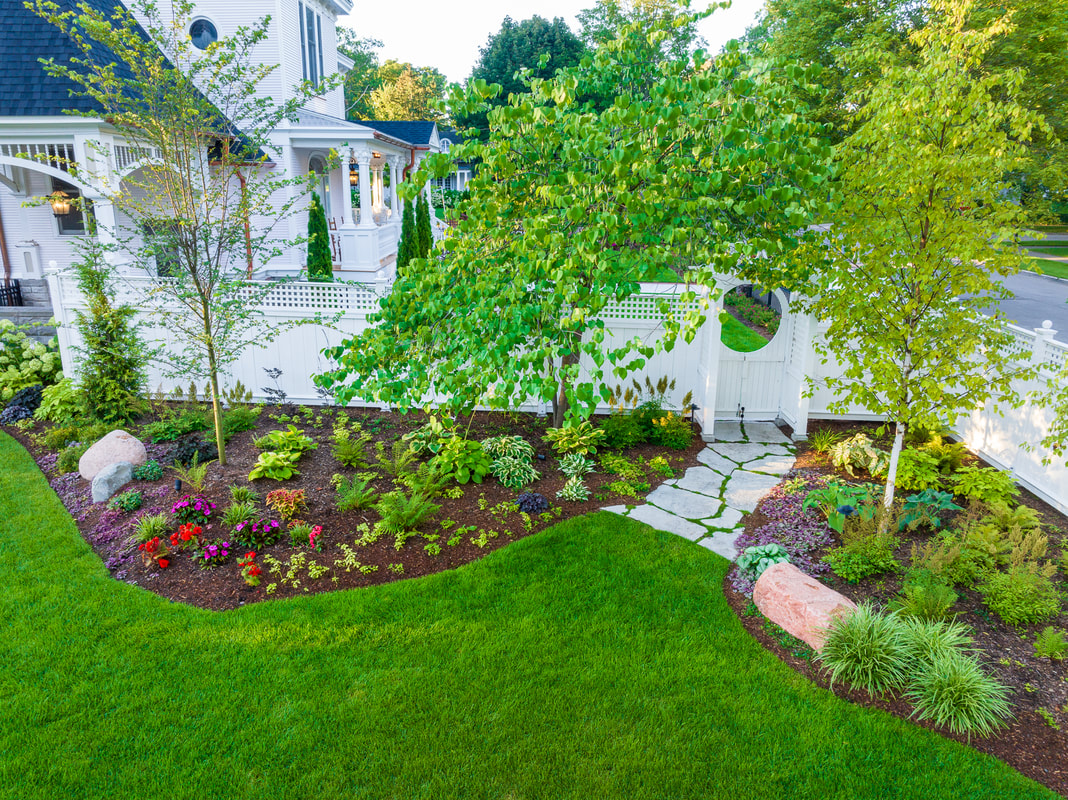Some Ideas on Hilton Head Landscapes You Need To Know
Some Ideas on Hilton Head Landscapes You Need To Know
Blog Article
What Does Hilton Head Landscapes Do?
Table of ContentsThe 8-Minute Rule for Hilton Head Landscapes9 Easy Facts About Hilton Head Landscapes DescribedHilton Head Landscapes Fundamentals ExplainedHilton Head Landscapes Fundamentals ExplainedHilton Head Landscapes Things To Know Before You Get ThisHow Hilton Head Landscapes can Save You Time, Stress, and Money.The Of Hilton Head Landscapes
Line produces all kinds and patterns and can be utilized in a selection of methods in the landscape. Line in the landscape is developed by the edge between two products, the synopsis or shape of a kind, or a long straight feature. Lines are a powerful device for the designer because they can be utilized to develop an unlimited range of shapes and types, and they regulate motion of the eye and the body.

Lines can have several attributes, such as those described listed below, yet they generally serve different functions. Number 1. Lines in the landscape - Landscapers near me. The residential or commercial properties of lines figure out how people respond to the landscape, both psychologically and literally. Straight lines are architectural and powerful; they produce an official character, are typically connected with a balanced design, and lead the eye directly to a centerpiece.
The smart Trick of Hilton Head Landscapes That Nobody is Discussing
Straight lines are usually located in hardscape sides and product. Bent lines produce an informal, natural, relaxed character that is associated much more with nature and unbalanced equilibrium. Rounded lines relocate the eye at a slower pace and include mystery to the area by producing concealed views. Vertical lines move the eye up, making an area feel larger.
Vertical lines in the landscape include high, slim plant material, such as trees, or tall frameworks, such as an arbor or a bird home on a pole. Horizontal lines relocate the eye along the ground airplane and can make an area really feel bigger. Low lines are much more subdued and develop a feeling of remainder or repose.
Hilton Head Landscapes Things To Know Before You Buy
Low lines are developed by reduced garden wall surfaces, pathways, and brief hedges. Lines are made use of to draw forms on a plan. In plan view, they specify plant beds and hardscape locations. Lines are likewise developed by the upright forms of constructed functions and plant product. There are three key line types that develop form in the landscape: bedlines, hardscape lines, and plant lines.
Bedlines attach plant product to your home and hardscape because the eye adheres to the line, relocating the gaze with the landscape. Hardscape lines are created by the edge of the hardscape, which defines the constructed structure. Line can likewise be produced by lengthy and narrow products, such as a fence or wall.
Hilton Head Landscapes Fundamentals Explained
Type is discovered in both hardscape and plants, and it is typically the leading aesthetic aspect that spatially arranges the landscape and usually establishes the design of the yard. The type of structures, plant beds, and garden accessories additionally determines the overall kind motif of the yard. Formal, geometric forms include circles, squares, and polygons.
Plants develop kind in the garden with their describes or silhouettes, but kind can additionally be specified by a space or unfavorable area between plants - Landscapers near me (https://www.domestika.org/en/stevenagonzales). Circles can be cycles, or they can be separated right into fifty percent circles or circle segments and combined with lines to develop arcs and tangents
What Does Hilton Head Landscapes Mean?
Circles are a solid design type due to the fact that the eye is always attracted to the facility, which can be made use of to emphasize a focal point or attach other types. Round kinds in hardscape and lawn panels.
The square type can additionally be segmented and secondhand consistently to develop a grid pattern. Unlike circles, squares are more powerful on the brink, which can be lined up or overlapped to produce one-of-a-kind patterns and more complex kinds. Polygons are many-sided forms with straight edges. Triangulars, as navigate to this site an example, are three-sided polygons.
Twisting lines commonly mimic the natural program of rivers or streams and can be explained as smooth lines with deeply bent wavinesses. Twisting lines (Number 3) function well for paths, plant bedlines, and dry stream beds. Twisting lines can add rate of interest and secret to a yard by leading visitors around edges to uncover brand-new sights and areas.
The 7-Second Trick For Hilton Head Landscapes

Common plant kinds are well established and standardized, as form is the most constant and recognizable quality of plants. Kind can additionally be produced with the massing of plants, where the overall mass develops a different form than an individual plant.
A highly different type should be made use of with careone or more work well as a focal factor, yet way too many wreak havoc. All-natural plant forms, instead than over-trimmed kinds, ought to establish the mass of the composition. The importance of total form is essentially based on the watching perspectivethe form of a tree can appear fairly various to a person standing under the cover versus checking out the tree from a range in an open field.
Getting My Hilton Head Landscapes To Work
Plant kinds additionally create and specify the gap or open spaces between the plants, producing either convex or scooped forms in the voids. High-arching tree branches usually create a concave open space under the branches, and a round cover with reduced branches loads the area to develop a convex kind outdoors room under the tree.

Report this page